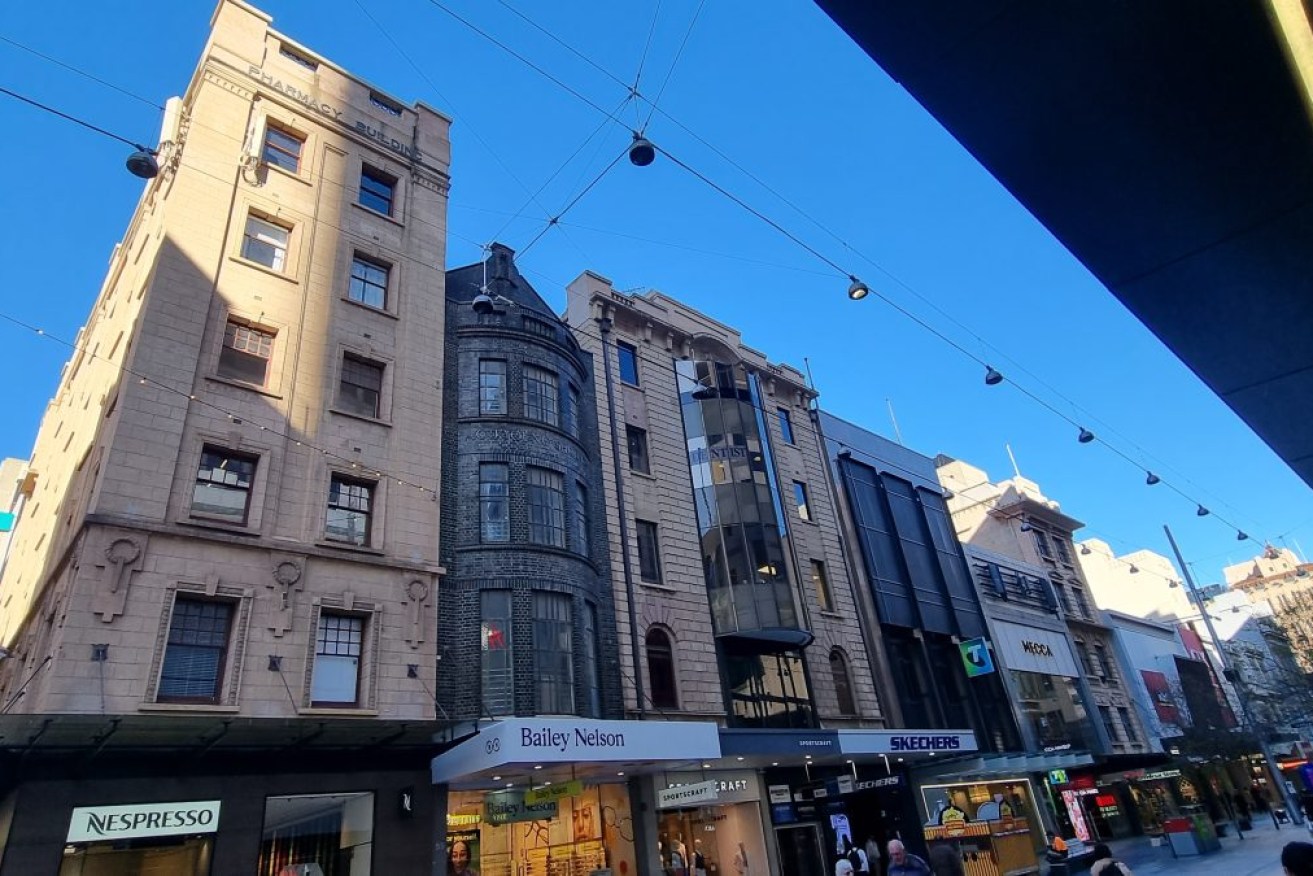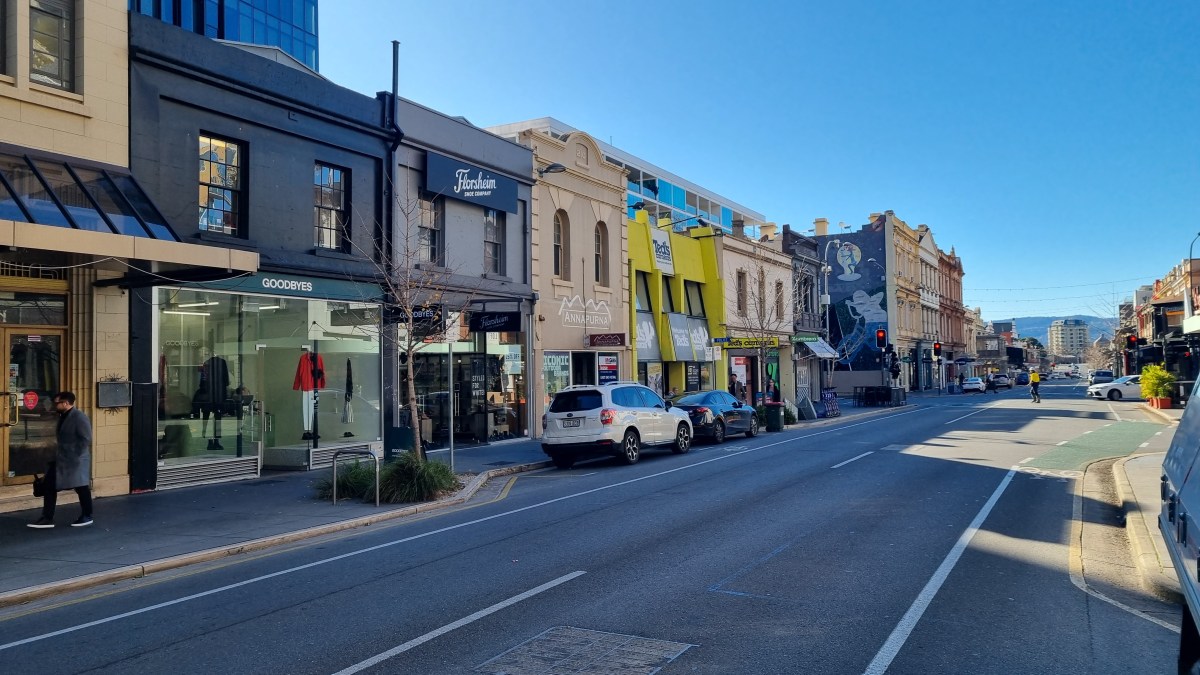Vacant CBD buildings ripe for apartments
The state government and Adelaide City Council will put $500,000 towards converting vacant CBD buildings into apartments, amid warnings the city is “at a crossroads” ahead of a predicted population boom.


"Above-shop premises" in Rundle Mall, the type of space being targeted for CBD housing. Photo: Thomas Kelsall/InDaily
The Capital City Committee, an intergovernmental body of the state government and city council, today announced it would spend $500,000 over two years to support adaptive reuse of vacant “above shop premises” in the CBD.
The funding will go towards hiring an adaptive reuse project leader to audit the city’s buildings and identify which ones can be converted into housing.
The new council employee will also review incentives for property owners to convert their properties and assess potential planning and regulatory reforms to speed up the process.

“Above-shop premises” on Rundle Street. Photo: Thomas Kelsall/InDaily
It comes after council last week published population forecasts predicting the City of Adelaide will grow from 26,120 residents in 2022 to 46,364 residents in 2041.
Titled the “State of the City Report”, it said the majority of the new city residents will be located in high or medium density apartments buildings – which could require an additional 36 36-storey residential buildings in the CBD.
The report further warned that the influx of new residents will “alter the built form” of the CBD.
University of South Australia adjunct professor Dr David Ness, an expert in infrastructure planning and asset management, said the report’s projections were a cause for concern.
“I believe we are at a crossroads in the history of our fair city,” Ness told councillors at last night’s council meeting.
“In response to the need to increase residential population in the city, current thinking seems dominated by the ‘build a bigger and higher Adelaide’ lobby.”
Ness said the Adelaide Economic Development Agency (AEDA), a council subsidiary, currently supports “a stream of major new city shaping projects” that he estimates would generate “200 million kilograms of embodied carbon”.
Embodied carbon represents C02 that is emitted during production, construction and maintenance of building materials. Ness said adaptive reuse of existing buildings should receive greater consideration so these emissions can be minimised.
“I should be most grateful if council would please support a close study of the adaptive reuse option to accommodate more city residents along the lines UniSA has suggested, which could focus on a selected precinct,” Ness said.
“This could examine how a population increase could be managed without the need for so many 36-storey apartment towers, consider possible savings in embodied carbon waste and cost, and also examine ways of achieving compliance, while fostering a more liveable, reactivated, smart and sufficient city.”
The forecasted population growth in the CBD also comes as office vacancy rates increase.
The most recent Property Council office market report in January recorded Adelaide’s office vacancy rate at 16.1 per cent – up from 14.2 per cent in July 2022.
An estimated 33 per cent of the CBD’s office buildings are 40 years old or more, according to the same report.
Adelaide’s office occupancy rate is at 74 per cent, according to a December Property Council report, although Adelaide has lower rates of working from home compared to other capital cities.
Lord Mayor Jane Lomax-Smith, an outspoken advocate for adaptive reuse, said repurposing office space can make new housing available quicker than major apartment developments.
“For cities with vacant above-shop premises, there is an opportunity for adaptive re-use to, if not fill the void, help take the edge off the housing crisis,” she said.
“Adaptive reuse is also fast. While major developments can take years, converting an office into an apartment can take anywhere from six to nine months, depending on the site.”
The Capital City Committee held a forum on adaptive reuse in May. The forum heard that the Dutch capital of Amsterdam was able to create 9500 new homes in 2022 through conversion of former offices, shops and commercial properties.
Amsterdam’s adaptive reuse peaked in 2020 when nearly 12,500 newly converted homes were brought online, the forum heard.
Premier Peter Malinauskas, who chairs the Capital City Committee, said: “We are doing everything we can to ease housing pressures and adaptive reuse is an innovative way of bringing housing to market quickly.”
“This plan also has the added benefit of breathing more life into the city at a time when major events are providing a boost to the local hospitality industry and wider economy.”




